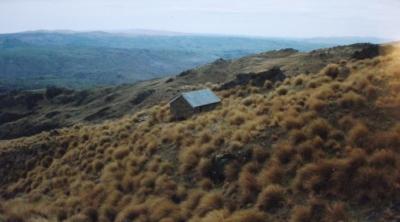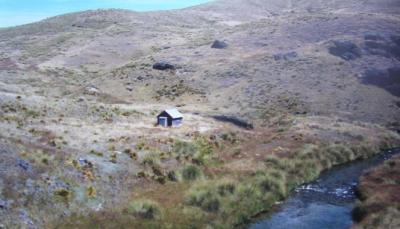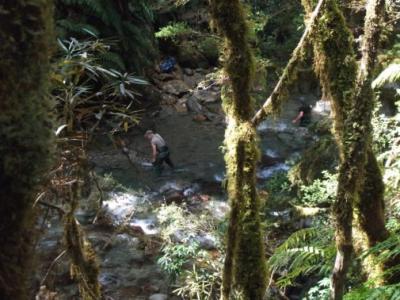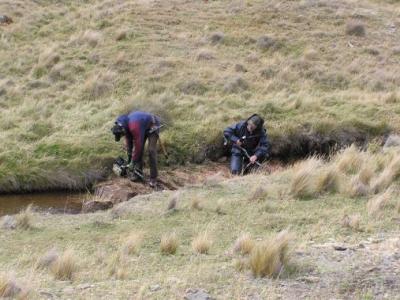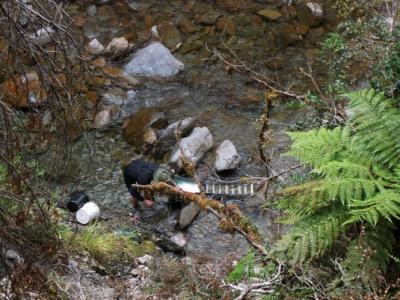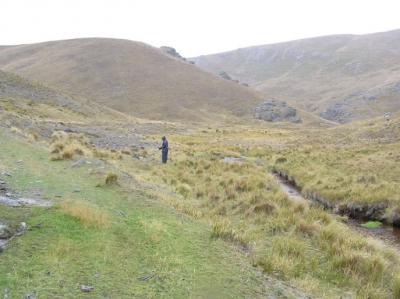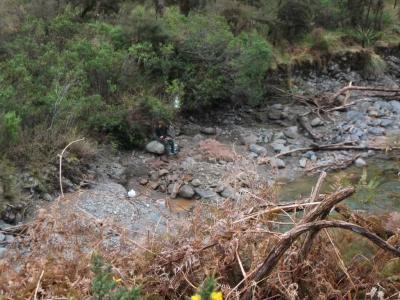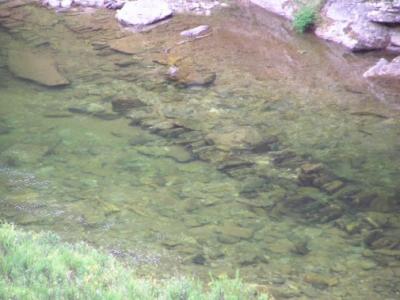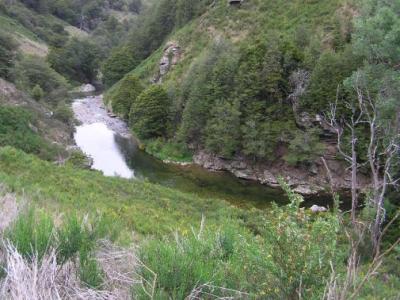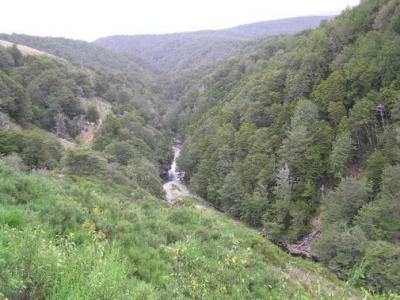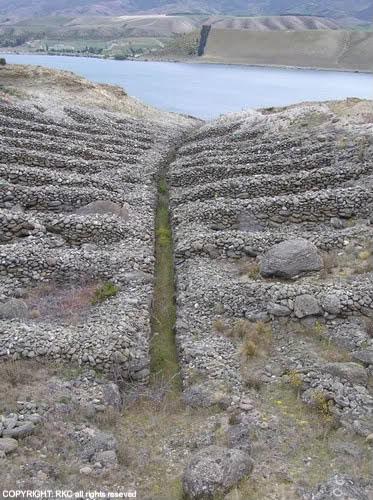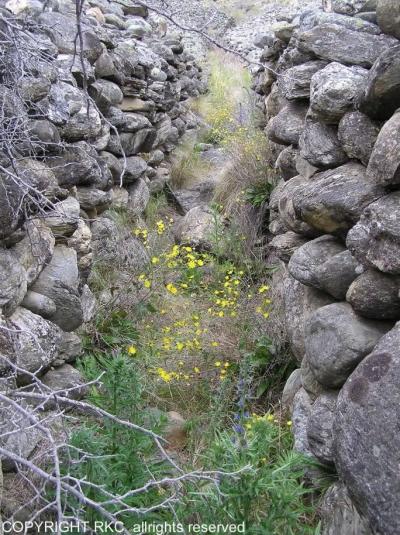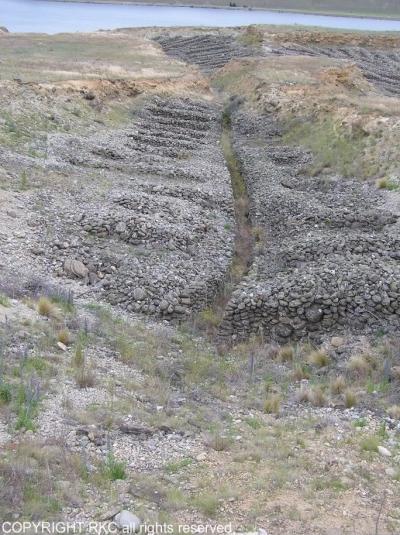-
Posts
50 -
Joined
-
Last visited
-
Days Won
3
Content Type
Forums
Detector Prospector Home
Detector Database
Downloads
Everything posted by RKC
-
G'day, In search of the vein Pumping on the side of a mountain in search of the right vein! Regards, Rob (RKC)
-
G'day, Recherche d'or en Afrique - GPX 5000; Garrett ATX, XP Deus ( for gold in Africa - GPX 5000; Garrett ATX, XP Deus ) Regards, Rob (RKC)
-

Casting Call For Gold Prospecting TV Show
RKC replied to Steve Herschbach's topic in Detector Prospector Forum
G'day, Regards, Rob (RKC) -

Casting Call For Gold Prospecting TV Show
RKC replied to Steve Herschbach's topic in Detector Prospector Forum
G'day, A good friend of mine tried something similiar a few years back! Traveling throw out five different location in the Wildest parts of Papua New Guinea an facing number of different challenges ,the teams will have to reach a tributary of the Upper sections of Sepik River thousand of kilometers from any civilization they will live with the local tribes ,learning will help them to build they own wooden canoes, with modern machines, find gold in the crystal clear waters timing with fish. and also hidden gold ingots near the coral isles of Papua and New Guinea . If they are lucky, they will discover endless riches, but they must be careful not to annoy the fearsome guardians of the river - the enormous crocodiles, sacred among the people of Papua and New Guinea , monsters, who are esteemed as gods and even in modern times inspire terrifying legends. And adventure with helicopters, cars, yachts and canoes - the ultimate test of courage and stamina. Regards, Rob (RKC) -

Renting A Caravan Or Motorcoach For Queensland???
RKC replied to vanursepaul's topic in Detector Prospector Forum
G'day, Ahhh Australia ... wide open spaces, friendly locals, kangroos ... https://www.youtube.com/watch?v=N_YaZ-emcPc&sns=em Regards, Rob (RKC) -

How Many Of These Have You Dug Over The Years?
RKC replied to AU_Solitude's topic in Metal Detecting For Coins & Relics
G'day, Nails, and a gadd (a small rock wedge or chisel ) used for working a quartz vein. Battery parts. Tools used in hard rock mining. Regards, Rob (RKC) -

How Many Of These Have You Dug Over The Years?
RKC replied to AU_Solitude's topic in Metal Detecting For Coins & Relics
G'day LipCa, But ... uncovered relic's can talk, and can often tell you a lot of what may turn out to be very useful! A couple of years back I uncover this when detecting one perfect summers day in Godzone. It was fully buried and well out of sight, but only had a couple of inches of dirt over it. What it told me was that there was the high probability there was a smelter close by. And after digging around I found some fire bricks which confirmed for me that the area was used by the old timers for smelting gold. This was an interesting find from another area. It was not buried but was placed at the base of a tree, easily seen. Its obviously a bolt from a gold stamper battery which attaches the iron part of the battery to its solid wooden base. But the baffling part is that I found it at least a kilometre from where the closest battery had operated. That was a find that did not tell me anything much ... but was interesting nevertheless. Battery part. Bottles are always interesting to uncover. Regards, Rob (RKC) -

How Many Of These Have You Dug Over The Years?
RKC replied to AU_Solitude's topic in Metal Detecting For Coins & Relics
G'day, Unearthing relics when detecting is nearly as much fun as getting the yellow from the ground. Picks are commonly found here in New Zealand (Godzone). I got this one in among some tailings in Otago a few years back ... which I left in place. One mine on NZs West Coast has this collection of old timers picks ... And the mine also has these ... Regards, Rob (RKC) -
G'day, Further to the thread at There is a Facebook page just put up with more information about the finding of The Hand nugget. I could not see any reference made in any of the newspaper articles, from the time, about the Garret model it was found with ... might be some reference made later on. https://www.facebook.com/handoffaith/ Regards, Rob (RKC)
-

The Beast Electric Off Road ATV Style Bike
RKC replied to nvchris's topic in Detector Prospector Forum
G'day, It looks as if I am going to have a problem replacing my CT110. I went into the Honda shop yesterday and the only road legal off- road bike ( Honda XR150L ) is unsuitable for the amount of road use I would subject it to. The gearing is far too low and the full knobby's would wear out very quickly on tar seal, as well as being dangerous. I tried a 200cc trail bike, which I was told was the same height as the 150cc and although I could reach the ground (it has a sunken seat) it still sits far too high to safely get through some of the tights spots I have to navigate. If Honda just started selling the Cross Club ( http://www.honda.co.jp/CROSSCUB/ ) in NZ I would have my suitable replacement bike. Regards, Rob (RKC) -

The Beast Electric Off Road ATV Style Bike
RKC replied to nvchris's topic in Detector Prospector Forum
G'day Fred, Here on NZs West Coast there is always a nice flat rock or a tree branch handy to put under the stand, as I have to do many a time. Especially when the ground is as soft as it is presently after a long wet Spring. G'day Gold Hound, I just had a look on the Honda Kiwi web site and the Honda CRF150f does look appealing! But as its not road registrable its out of the question for me. While looking around the site I noticed the XR150L which is road registrable ( http://www.hondamotorbikes.co.nz/motorcycles/farm-2-and-4-wheel/2-wheel-farm/xr150/ ). Next time I'm at our Honda shop in Greymouth I'll see if they have one in the shop and try it out for size. And its reasonably priced, which is a big advantage. I have to be careful with bike tyres as it can be very dangerous to use full knobby tyres on the often wet and slippery, tar-sealed roads of the West Coast. It took me some time to find the right tyres for my CT110s. I now use a half knobby tyre that I can safely use both on and off road. I tried road tyres (as used on the postie bikes) some years back and they were disastrous on unsealed roads with lose shingle. I had to go so slow to prevent me coming off I could just as easily have walked. And I found out the hard way that road tyres are more easily punctured than knobby tyres are. Getting a flat and becoming stranded when in a remote area can be near life threatening in NZ, especially during winter. About 10 years ago I spent an entire Christmas day walking out of a remote area (7 hours walking in the hot sun) after getting a flat. And about three years back here on The Coast I got a flat and had to walk the bike out for a about 4 or 5 ks to a main road. But, worse than having an unplanned walk, I must have damaged the rim slightly on the way out ... which I was unaware of at the time. I found out later when I was driving into town one day. I was driving at speed when I lost control of the bike and it suddenly fish tailed all over the road. I then hit the side road barrier which threw me off the bike into the centre of the road. Luckily there were no broken bones, but the next day I was covered from head to toe in bruises (and cuts on my face). What must have caused the crash is that the small rim damaged caused when walking my bike out made the tyre come off the rim when the air pressure was low and I was travelling at some speed. I had to replace nearly half of the bike ... which, thankfully, was insured. Regards, Rob (RKC) -

The Beast Electric Off Road ATV Style Bike
RKC replied to nvchris's topic in Detector Prospector Forum
G'day Gold Hound, The reliability of Honda motor bikes is phenomenal! And it would be the reliability, more than anything else, that has made the Honda Club the biggest selling bike in history. I just hope that is not going to change now Honda is manufacturing in China. There have been many times I could have done with the few extra HP of a 150cc bike. But the extra weight of a conventional trail bike is not worth the extra HP for me, personally. And conventional trail bikes sit too high for me to be comfortable when navigating tight and tricky terrain. Might be OK if I was over 6 foot tall ... but I'm not. Its too far to fall when sitting high. I've come off a few times and the only injury has ever been bruising. The step-through aspect of the CT110 makes it much easier to stay upright in tight spots. And being clutch-less is really handy. When I was in the Palmer river area (Queensland) in the 1980s one of the guys with us had a small monkey bike. But it was not particularly useful because it was so small. I first learnt of postie bikes in Queensland when a Queensland farmer recommended them to me. He had used one when he had a plantation in PNG and had found that they would get through mud better than anything else, and if they did get stuck they were light enough to be lifted out more easily than a lager trail bike. Regards, Rob (RKC) -

The Beast Electric Off Road ATV Style Bike
RKC replied to nvchris's topic in Detector Prospector Forum
G'day, Regards, Rob (RKC) -

The Beast Electric Off Road ATV Style Bike
RKC replied to nvchris's topic in Detector Prospector Forum
G'day, Now that Honda is no longer making the CT110 it looks like that, in Australia at least, the Honda NBC110 is to be the replacement motor bike for Australia post ( http://www.apbauto.com.au/shop/honda-nbc110-super-cub/ ). The NBC110 seems like it could well be a worthy replacement for use by prospectors. The NBC110 is made in China, whereas the old CT110 was made in Japan .. so, the build quality may not be equal to the high standard set by the old CT110. There was a NBC110 recently sold in New Zealand, but it was only for off-road use as it could not be road registered (which seems strange). The NBC110 would be an ideal replacement for me. But, only if I could get it road registered! This became this after being exposed to the salt laden air of New Zealand's Wet West Coast. Regards, Rob (RKC) -

The Beast Electric Off Road ATV Style Bike
RKC replied to nvchris's topic in Detector Prospector Forum
G'day, There is a similar bike being developed at present in New Zealand for the farmer market http://www.ubcobikes.com/ The pricing has not been officially announced yet, but ... it looks like it will be around NZ$7,000. The manufacturer here will need to have a price well below $7,000 for them to sell in any numbers to Kiwi farmers. I like the bare bones nature of this NZ design, but being electric, and the high purchase price, kills it for me. I've been using Honda CT110 bikes since the 1980s but as Honda are no longer making them I will need to get something else shortly. My current bike has over 80,000 ks (after 5 years) on the clock and I expect to get to 100,000 ks ... if I take care of it! The best aspect of the Honda CT110 is that its so light I can easily lift it out if it gets stuck in mud or snow. All of mine have had hi and lo ratio so I can gear it down to get up any steep hill. It does have a problem getting through water and will cut out if water splashes on the motor. I wonder how electric bikes handle going through streams, or even rivers. Petrol bikes still seem to have all the advantages over electric bikes for accessing remote areas. Electric bikes are probably only for getting around town. Regards, Rob (RKC) -
G'day Steve, Someone really needs to write a history of gold detecting in Australia, even if its just an attempt that can be added to. The reality is that its probably not possible to write a history that would get all the facts 100% correct. As the old saying goes, "History is written by the winners". Minelab was the winner and the fact is that Minelab deserved to win (probably because it was a company that was never risk adverse). Back in the 1980s Minelab was everything an entrepreneurial company should be with numerous attempts at finding a winning product and not letting a few failures stop them. I remember attending a meeting of the PMAV in central Victoria during the mid 1980s when a salesman from Minelab got up to spruik a machine that could be fed by an excavator, where the dirt was run along a conveyor, and an in-place metal detector would detect anything metallic which would then be separated from the muck. A good idea, but one that did not take off for them (for whatever reason). And about the same time Minelab had the idea for a metal detector on a tennis court which would detect when a ball went over the line and was out of court. Another good sound idea, but, again, one that did not succeed for them. It is an idea which is nevertheless in common use these days, but using different technology, from another company. One of my biggest regrets of my life is not buying an SD2000 in 1995. I clearly remember pacing up and down while discussing with others involved whether or not to make what would have been a big investment for us at the time. To complicate matters, at the same time the SD2000 was announced there was a new detector from Gerald Wright in Western Australia being advertised as the latest and greatest which solved the problem of getting more depth in the HOT Australian ground than the previously used VLF detectors. I had no idea which to buy and ended up not buying either. Back then, just when the SD2000 was released, there was no reason for me to think it was anything special. The VLF detectors Minelab had sold previously were nothing any better than the American VLFs sold in Australia ... as far I was aware. The Gerald Wright detector however seemed to have a good pedigree as Gerald Wright had worked with the university of Western Australia developing mine detectors. BTW: Something historically interesting about 1995 was that the first SD2000s used in the goldfields of New Zealand (Otago specifically) did not have the instant success that they had in Australia. Far from it ... the first SD2000s used in New Zealand were soon being sold second hand for prices as low as $600. Detecting in New Zealand is a world apart from detecting for gold in any other country ... mostly because we have the quietest goldfields ground in the world. It will be interesting to see if history repeats itself in Godzone with the new GPZ 7000. I've always said that depth is everything in New Zealand, but I'm not so sure the GPZ 7000 will give us any depth advantage, because our ground is so quiet. It seems to me that it might be that the detectors designed to handle the HOT ground in most goldfields of the world are a distinct disadvantage in New Zealand (relating to the issue of depth). The Minelab SDC 2300 is however a detector that seems to me to be perfect for New Zealand where large nuggets are extremely rare (the largest nugget detected in New Zealand that I am aware of was a 20 ouncer found with a Minelab PI metal detector on the West Coast about 10 years ago). The SDC 2300 has some significant advantages with design, and the waterproofing is a big plus for New Zealand. In the late 1990s I toyed, for the second time, with the issue of buying a Minelab PI detector. And it was again a matter of finding my way through the hype. I remember having a heated discussion with a salesman in a Sydney (Australia) mining supply store who kept telling me the latest Minelab detector used entirely new technology unlike anything produced by any company before. And I had to tell him the technology was based on Pulse Induction. But he kept telling me it was nothing like Pulse Induction technology. And he was sure of this as he had been to Minelab HQ in Adelaide where he had completed an instruction course. That was enough reason alone not to buy one! Then after returning to New Zealand I went into another store selling Minelab detectors and the salesman started to tell me the Minelab detectors were the only ones that would work in New Zealand because New Zealand had highly mineralized soils. I then began to think all the Minelab salesmen must have gone through the same induction course at Minelab HQ in Adelaide and I'ed be better to get my Kiwi gold by some other means than detecting for it. In the 1980s I used to keep a diary, and a few years ago I randomly opened a diary page from the early 1980s (when I was detecting in Georgetown, Nth Queensland), and the entry I read said, "There is a rumor going around the goldfields that a Victorian company was soon to start selling a Pulse Induction metal detector that could work in the highly mineralized ground of the Australian goldfields". I had completely forgotten about this rumor until I read the entry. But after reading it I remembered that it was common knowledge in the goldfields of Australia back then that the solution to getting the gold everyone knew was there but too deep, was to get it with a PI detector that could handle the mineralization. All well known these days... and, known back then (pre SD2000). I remember reading on a detecting Internet forum more than 10 years ago, when the history of gold detecting in Australia was being discussed, that Bruce Candy attended a club meeting (in Melbourne I think) where the need for a detector that would handle the Hot Australian ground was discussed. If that's true, its fascinating how things come together and someone then comes up with something truly innovative that changes lives. Meanwhile ... the Kiwi fossickers are presently out enjoying a long hot summer here in Godzone happily using their $775 Goldbug detectors. Regards, Rob (RKC)
-

Got To Try The New Minelab SDC 2300
RKC replied to Steve Herschbach's topic in Minelab Metal Detectors
G'day Steve, Great report! I was most interested to read your statement that "the coil is 100% impervious to being knocked around and with the included scuff cover can be allowed to ride along on the ground". As the coil is so impervious to knocks then I guess that the coil can also be brushed through wet vegetation without any masking noise. I didn't think I would ever consider buying a Minelab MD but this new entry to the market might just suit a spot I have in mind to detect where I intended to use my Whites GMT (all fine specimen gold in quartz). I carried my GMT into the area recently ... but, to get it in without damaging it I had to wrap it with cloth to put in my backpack. And I won't be able to use the GMT anytime when its raining, which is most of the time at this time of year. I hate arriving at my remote camp where I've left a detector and knowing that water may well have got into the electronics after a downpour. During a West Coast (NZ) downpour the rain can be so heavy that moisture is floating in the air and its that moisture which can get into a detector even if its covered from the rain. My first preference of a detector to use in this spot was one of my GQSS's, but when I got them out recently both were unusable (probably because of moisture damage). Looks like you have a fun summer coming up in Alaska. I'll be following your posts about your summer in Alaska while I sit indoors with rain falling so hard on my roof that its deafening. Regards, Rob (RKC) -

279 Ounce Gold Nugget Find In Australia
RKC replied to Steve Herschbach's topic in Detector Prospector Forum
G'day, That "nugget" is a fake! My all-time favourite photo of fake gold is this one ... The really fun part of the Internet are the fake posts and staged photos that are often posted. I always get a good laugh when someone posts a photo of a nugget sitting in a freshly dug hole in the dirt when its obvious the nugget has long before been treated with acid. Regards, Rob (RKC) -
G'day, Gold Rush in the Desert Around Jabal al-Sukkari, or Sweet Mountain, there are now hundreds of Egyptians looking for gold. They carry their metal detectors with pride, like rocket launchers on their shoulders. http://panorama.madamasr.com/2013/searching-for-gold-in-the-desert/ Regards, Rob (RKC)
-
G'day Fred, You will have to add a visit to NZ to your bucket list. We get quite a few Americans and Europeans (plus a few Australians) who visit to fossick for gold every summer. Goldfields accommodation. Goldfield hut Gold fossickers in a New Zealand West Coast auriferous river. Visiting Australians fossicking for gold in a NZ high country stream. Kiwi hobby fossicker Australian prospector in the NZ high country detecting in the rain. He was using a Minelab VLF detector and got a small piece of gold in less than an hour of detecting in old gold tailings. The other visitor from Australia and myself who were both using PI detectors got no gold at all from this area. Kiwi fossicker taking a break from digging. Regards, Rob (RKC)
-
G'day Fred, While I admire the systematic and diligent way the Chinese cooperatively worked for alluvial gold in the late 1800s in New Zealand, I can just as equally understand that the European miners would often want to move on to the next, new, and quiet possibly richer, gold discovery. I believe the difference in attitudes to mining between the two races can be understood by looking at the motivation of each. The European miners were in a country they regarded as their own and were here for the rest of their lives, and all understood they were colonising a country their decedents would grow up in. The only country any of the Chinese felt any allegiance to was China, and their only rational was to make enough to get back to China where they could live out their remaining days in comfort. Therefore the difference in motivation had to be the main influence on how they worked. Also, many Chinese would leave New Zealand even when they were on good gold after getting what they had predetermined was enough gold to set themselves up for the rest of their lives in China. Even if they died when in New Zealand their country men would do their uppermost to have their body shipped back to China. One of the most interesting historical accounts of Chinese miners succeeding on ground abandoned by European miners occurred on New Zealands Waikaia river in the 1880s and 1890s. The following is from historical accounts ..."Down in the valley below Potters in a gorge of the Waikaia river was the Canton Claim. Like the town of Canton at Round Hill the claim was worked originally by a party of Europeans who after getting little from it sold out to the Chinese. Sited at the bottom of the gorge it was a difficult claim to work. But the Chinese determined to put in a mine right beneath the river. Shoring up the roof with cut logs as they moved ahead they worked under appalling conditions of water seeping through from the river above. Nevertheless in their dogged, diligent way they soon made the mine pay and a number of Chinese were able to purchase their fares home -- the ultimate aim of most Chinese miners in New Zealand. Later they put in a system of wing-dams to divert the river from one side to the other and so work the bed on the surface. Although the Canton Claim was to prove one of the richest mines in the Waikaia Valley it was unfortunately destroyed in the big flood of 1878. The remains of the wing dam and the Chinese huts can now be seen below the present Canton bridge." Remaining Wing Dam walls below the Canton Claim. Also, from another historical account ... "The most famous claim and certainly the most valuable for several Chinese parties was the 'Canton', commemorated today in the name of a road and a bridge. European miners had not been successful there, it was difficult to work as a result of floods and drainage, and in 1883 it was sold to a Chinese party. By 1892 successive parties had worked the river-bed and the terraces. Those who made their fortune returned to China. Several claimed that their countrymen had secured 75 lbs (900 ozs) weight of gold. Sam McAuley recalled in old age that the Chinese showed him their underground workings, the river above, and logs from the bush to support the overburden. Some Chinese believed there was 900 ozs of gold in that paddock, a warden hazarded a guess at 600 ozs. Dr Ng records that Peter Chandler disbelieved the claim of under river workings as such would have required powerful pumps. A third party was working there in 1882 and they may well have been the tunnellers. There were other Chinese claims nearby and in 1876 it was reported that one of these was the first to secure success in that area by using waterwheel and pump instead of a tail-race to drain the site. Here and elsewhere much of the Chinese success was due to strong leadership, clan loyalty and systematic hard work." "For a light in the tunnels the Chinese always used candles. These were fitted to a piece of wire shaped for that purpose, and with a spike at one end that could be stuck into the ground wherever convenient. It could be shifted in a moment to any part of the tunnel, be it walls or floor." "The conditions of work in these tunnels were definitely most unpleasant and the majority of the Chinese ended up with rather humped backs because of the continual stooping underground." Present day Waikaia River at the Canton Claim. Present day Waikaia River at the Canton Claim. Regards, Rob (RKC)
-
G'day, Here in New Zealand over the last 20 years archaeologists have extensively studied tailing piles while recording historic gold mining sites. And in the province of Otago in the South Island, there were over 500 mining sites, with tailing's, recorded in the upper reaches of a single river (Clutha river). In one report archaeologists stated that "... neatly stacked tailing's are commonly assumed to be the work of Chinese miners. This is an unreasonable assumption; many mining sites which have been worked only by European miners are equally tidy. Conversely, the tailing's in some sites known to have been worked by Chinese miners are not neatly stacked". My take on the issue referred to in the above statement by archaeologists is that both European and Chinese miners hand stacked rocks ... which they had to do out of necessity! But, there was often some difference, and more often than not the Chinese miners stacked the rocks much more neatly and precisely than the European miners. One reason for this was the fact that the Chinese tended to work cooperatively in large groups and would always work systematical. Also, the Chinese were more likely to be reworking previously worked ground than to be working virgin ground. The European miners were usually the first on the scene of a new gold discovery and in their rush to get the very best of the gold, they only did what work they had to do to get the best and would soon move on to the next rush. The Chinese would often come onto a goldfield a little while after the first rush had concluded, and after most of the Europeans had moved on to the next rush. Then, because the excitement of the initial rush had faded, they could work in a less hectic atmosphere. Chinese miners were thorougher by nature, and also ‘had’ to be thorougher to get whatever gold the European miners missed. And in a less hectic post-rush atmosphere, the Chinese had the time and inclination to precisely hand stack rocks in walls. Although it can never be ruled out that there may be some unworked highly auriferous virgin ground under tailing's, its highly unlikely ... especially where the Chinese had worked. Any gold found these days under tailing's is likely to be gold missed by the earlier miners who might have mistakenly thrown a nugget or two aside, such as when forking in a tail-race. Here in New Zealand there are an impressive number of old sluicing mines with stacked stones, that remain intact. Nevertheless, there have been many destroyed by gravel removal, land development, dam construction, modern mining, and in recent years by the bulldozing flat of tailing's to plant vines for wine. What has saved most of the remaining mine sites is their remoteness, and those that remain are mostly in an excellent state of preservation. New Zealand archaeologists have classified tailing's into the following categories, parallel tailing's, curved tailing's, box tailing's, fan tailing's, blow down tailing's, amorphous tailing's, pot-hole tailing's and herringbone tailing's. Herringbone tailing's are the most interesting and are characterised by a herringbone pattern with the stones stacked in parallel lines at angles to a central tail-race with the working face encroaching from the lower end of the claim. These tailing's are easily the most visually interesting of all tailing styles because of their symmetry. And the best example of herringbone tailing's in New Zealand, and most likely anywhere in the world, can be found at Quartz Reef Point in Central Otago. These tailing's have survived untouched and in a pristine condition since the very last miner abandoned the diggings. And the survival of these particular tailing's, even though they are within fives minutes walk of a main road, has been because they were on privately owned farmland where the landowner had always strictly restricted access. Until recently the only people the landowner would allow to visit the tailing's were organised groups, such as the local historical society, who would be allowed in about once a year while under supervision. Some years ago the landowner gifted the land to the Dept of Conservation (DoC) who now manage the ground encompassing the tailing's as one of New Zealand’s most important historic reserves. About four or five years ago there was a track constructed so visitors could easily walk in from a car park, and at the tailing's there is a viewing platform that overlooks the entire tailing's. They are now one of the premier tourist attractions of Central Otago with a great number of people visiting each day for what is a unique experience not to be found anywhere else. Herringbone tailing's Quartz Reef Point Tail race Herringbone tailing's Quartz Reef Point Regards, Rob (RKC)
-
G'day, A gold mine in the Palmer River catchment during the 1980s (I think it was the Adams mine). Adams mine (?). Dredging at Dog Leg Crossing on the Palmer river just after The Wet. The yellow dredge was owned by an ex Alaska dredger who dredged in Alaska during the 1950's and 1960's. He used to invite everyone camping at Dog Leg Crossing to his camp at night and we would sit around listing to his stories of jars full of gold, and stories of dredging in Alaska during winter when he would have to use a chain-saw to cut through the ice so he could put his dredge in the river. Palmer river at Dog Leg Crossing. The water had stopped running which prevented any more dredging (dredge tailings pile to the left of the photo). The main reason dredging from the Palmer was not as profitable as dredging in Victoria in those days was that there was a short window of opportunity to dredge between when the wet season with flooding rivers finished and when the river stopped flowing. There was flood gold everywhere and if we could have dredged longer much more gold would have come out of the Palmer ( https://imagizer.imageshack.us/v2/626x386q90/743/FgKxCG.jpg ). Later the dredgers moved to the Mitchell river a little further south ( https://imagizer.imageshack.us/v2/864x576q90/661/LmtqjI.jpg ). For some reason the Mitchell flowed for a longer time after the wet season ended. Palmer river catchment in mid winter (The Dry). https://imagizer.imageshack.us/v2/730x504q50/834/z6djn.jpg Palmer river at Palmerville. An old Chinese wing dam made from stacked stones, in Sandy Creek (a tributary of the Palmer river). A Cape York goldfield. Palmer river catchment. Cape York. The End. Regards, Rob (RKC http://tinyurl.com/poc85vt )
-
G'day, Palmer River (The River of Gold). An abandoned mining companies airfield in the upper Palmer River. The middle reaches of the Palmer River near Maytown. The detecting here was nothing but frustrating! All I could ever detect were old Chinese coins. Everybody told me they were virtually worthless but I collected enough to fill a jar and took them into a coin dealer in Sydney who told me what everyone else had already told me. I probably still have them somewhere. https://imagizer.imageshack.us/v2/722x492q50/837/9dwo.jpg Palmer river at Palmerville. https://imagizer.imageshack.us/v2/704x500q50/843/gmo2p.jpg Palmer river at Dog Leg Crossing. https://imagizer.imageshack.us/v2/535x378q90/673/6pn6qS.jpg Palmer river at Dog Leg Crossing, in the early 1980s. https://imagizer.imageshack.us/v2/504x349q50/818/s06r.jpg Emptying a pool on Sandy Creek (Palmer river tributary) so gold could be got from the bedrock crevices. https://imagizer.imageshack.us/v2/517x365q50/661/m6ct2Q.jpg Dredging in Sandy Creek, just prior to the river drying up. https://imagizer.imageshack.us/v2/659x460q50/850/iltv.jpg Working a creek bed in a Palmer river tributary in mid winter. The sign says Caution Crocodiles (Bloomfield river). Another sign ... that everyone ignored. The small sign at the back said ... NO ROAD CREB access only. https://imagizer.imageshack.us/v2/950x659q90/633/aWC6II.jpg Dredging in Tunnel Creek, near China Camp. https://imagizer.imageshack.us/v2/563x379q90/841/rco6.jpg Dredging in Tunnel Creek, near China Camp The structure you can see just behind me is interesting. It was built by an American dredger. But, not just any American dredger ... a dredger who was responsible for most of the design innovations we see in dredges today. He was dredging tin here (China Camp) for a time in the early 80s. This camp is built on fine tailings from the famous Lode Hill Tin mine. Lode hill was a massive hydraulic sluicing operation. I was told that the river the tailings were dumped into ran muddy right to the river's mouth at Bloomfield, and out to sea. http://imageshack.com/a/img843/9538/6ly4r.jpg https://imagizer.imageshack.us/v2/582x389q90/912/HR3vFG.jpg Map of mines at China Camp. https://imagizer.imageshack.us/v2/720x504q50/838/vw92.jpg Camp at Load Hill, China Camp. The start of the northern end of the CREB track near Bloomfield. Marvelous Cape York. Regards, Rob (RKC)
-
G'day, Tin Mining and the ARGO. https://imagizer.imageshack.us/v2/989x659q90/905/lGkbML.jpg https://imagizer.imageshack.us/v2/560x389q90/903/gRT1xH.jpg https://imagizer.imageshack.us/v2/437x659q90/911/4qhO7t.jpg https://imagizer.imageshack.us/v2/978x659q90/633/sYReGI.jpg I used this ARGO to get into a remote tin mining area that had no roads in at all. We carried all our gear in on the Argo which floated in via a river. I always drove, and as the water was not fast flowing there was enough propulsion in the turning of the wheels to get us forward when going in and even when going out, upstream. If the water had been running any faster we would have had to use an outboard motor. It was always a slow trip though ... but my mate did not mind in the least he used to sit in the back smoking his pipe and just enjoyed the trip. This guy that I teamed up with to dredge was from a long established Nth Queensland mining family and he had been tin mining all his life. The deal decided on between the two of us was that he would supply the Keene 5-inch dredge he had just bought new ( https://imagizer.imageshack.us/v2/628x420q50/820/y6fg.jpg ) and would also provide the location of a river he thought would carry good stream tin. I was to train him in how to use the dredge and I supplied the Argo to get into the river. And we were to work equally ... which we did. We took turns dredging each day with one person dredging for 40 minutes while the other panned down the tin concentrates from the previous dredging for the 40 minutes. We could not dredge any longer than 40 minutes as the tin loss would then start to get unacceptable. We hit rich tin straight away in packed virgin wash below about a foot of lose drift sand, and we soon got into a productive routine. It was so routine it started to feel like going to work in a factory every day. He was over the moon about it as it was the best tin he had every mined in his life, and probably better than his father before him. Every day when we finished up for the day he would have a big grin on his face as he slung the bag of tin on his shoulder to carry out. Running the dredge concentrates through a streaming box to get rid of excess sand. After this stage the tin was dried on a fire and we would have a bag of tin which was about 75% tin ... concentrated enough so the tin buyer could purchase it. https://imagizer.imageshack.us/v2/1790x1245q50/841/vftqw.jpg Running the dredge concentrates through a streaming box https://imagizer.imageshack.us/v2/1837x1282q50/837/pew7.jpg Running the dredge concentrates through a streaming box. Regards, Rob (RKC)

.jpeg.4acfd4015f7652aa4e603d423a2f1c78.jpeg)

